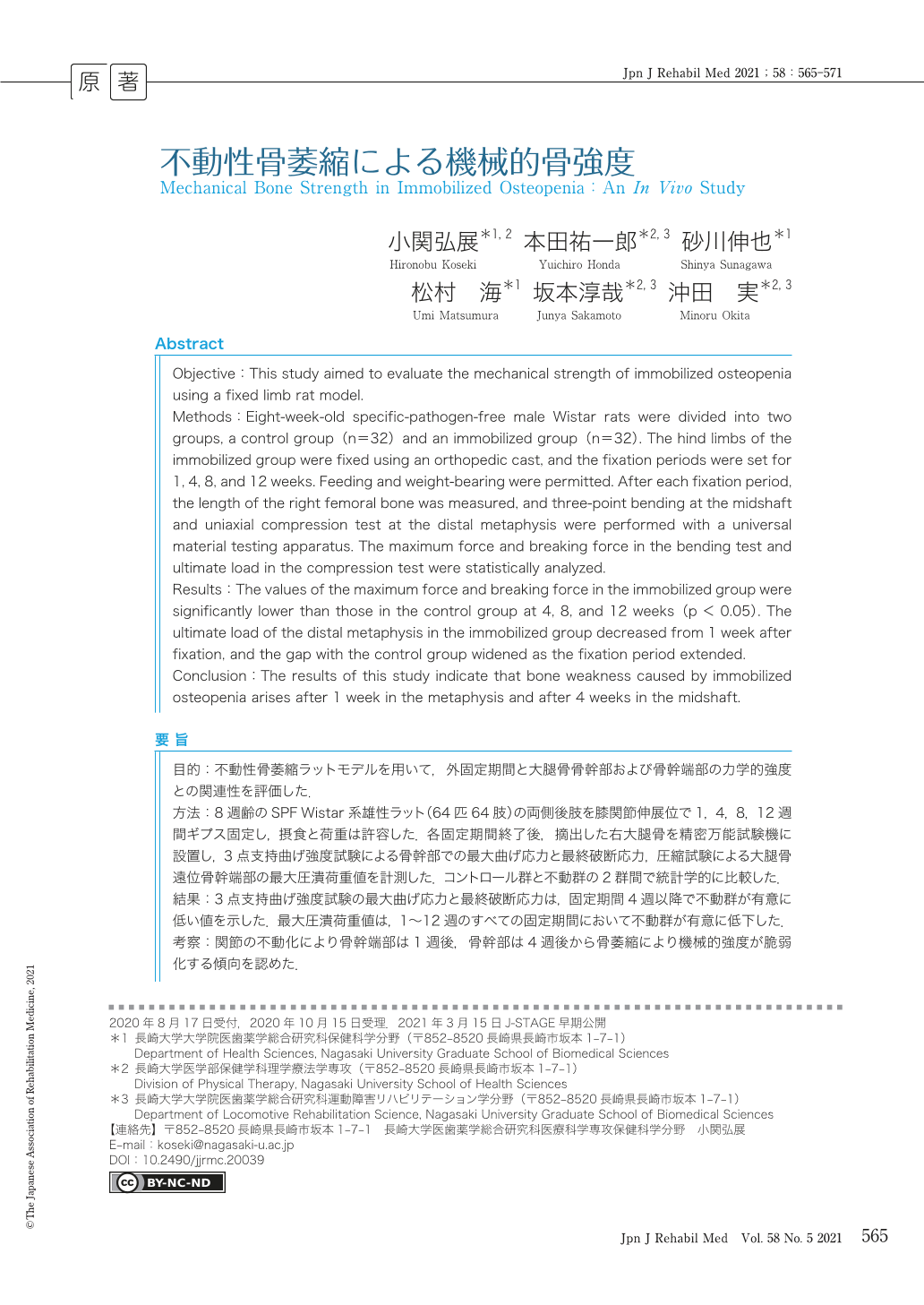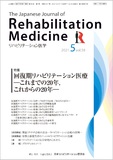Japanese
English
- 販売していません
- Abstract 文献概要
- 1ページ目 Look Inside
- 参考文献 Reference
要旨
目的:不動性骨萎縮ラットモデルを用いて,外固定期間と大腿骨骨幹部および骨幹端部の力学的強度との関連性を評価した.
方法:8週齢のSPF Wistar系雄性ラット(64匹64肢)の両側後肢を膝関節伸展位で1,4,8,12週間ギプス固定し,摂食と荷重は許容した.各固定期間終了後,摘出した右大腿骨を精密万能試験機に設置し,3点支持曲げ強度試験による骨幹部での最大曲げ応力と最終破断応力,圧縮試験による大腿骨遠位骨幹端部の最大圧潰荷重値を計測した.コントロール群と不動群の2群間で統計学的に比較した.
結果:3点支持曲げ強度試験の最大曲げ応力と最終破断応力は,固定期間4週以降で不動群が有意に低い値を示した.最大圧潰荷重値は,1〜12週のすべての固定期間において不動群が有意に低下した.
考察:関節の不動化により骨幹端部は1週後,骨幹部は4週後から骨萎縮により機械的強度が脆弱化する傾向を認めた.
Objective:This study aimed to evaluate the mechanical strength of immobilized osteopenia using a fixed limb rat model.
Methods:Eight-week-old specific-pathogen-free male Wistar rats were divided into two groups, a control group (n=32) and an immobilized group (n=32). The hind limbs of the immobilized group were fixed using an orthopedic cast, and the fixation periods were set for 1, 4, 8, and 12 weeks. Feeding and weight-bearing were permitted. After each fixation period, the length of the right femoral bone was measured, and three-point bending at the midshaft and uniaxial compression test at the distal metaphysis were performed with a universal material testing apparatus. The maximum force and breaking force in the bending test and ultimate load in the compression test were statistically analyzed.
Results:The values of the maximum force and breaking force in the immobilized group were significantly lower than those in the control group at 4, 8, and 12 weeks (p<0.05). The ultimate load of the distal metaphysis in the immobilized group decreased from 1 week after fixation, and the gap with the control group widened as the fixation period extended.
Conclusion:The results of this study indicate that bone weakness caused by immobilized osteopenia arises after 1 week in the metaphysis and after 4 weeks in the midshaft.

Copyright © 2021, The Japanese Association of Rehabilitation Medicine. All rights reserved.


